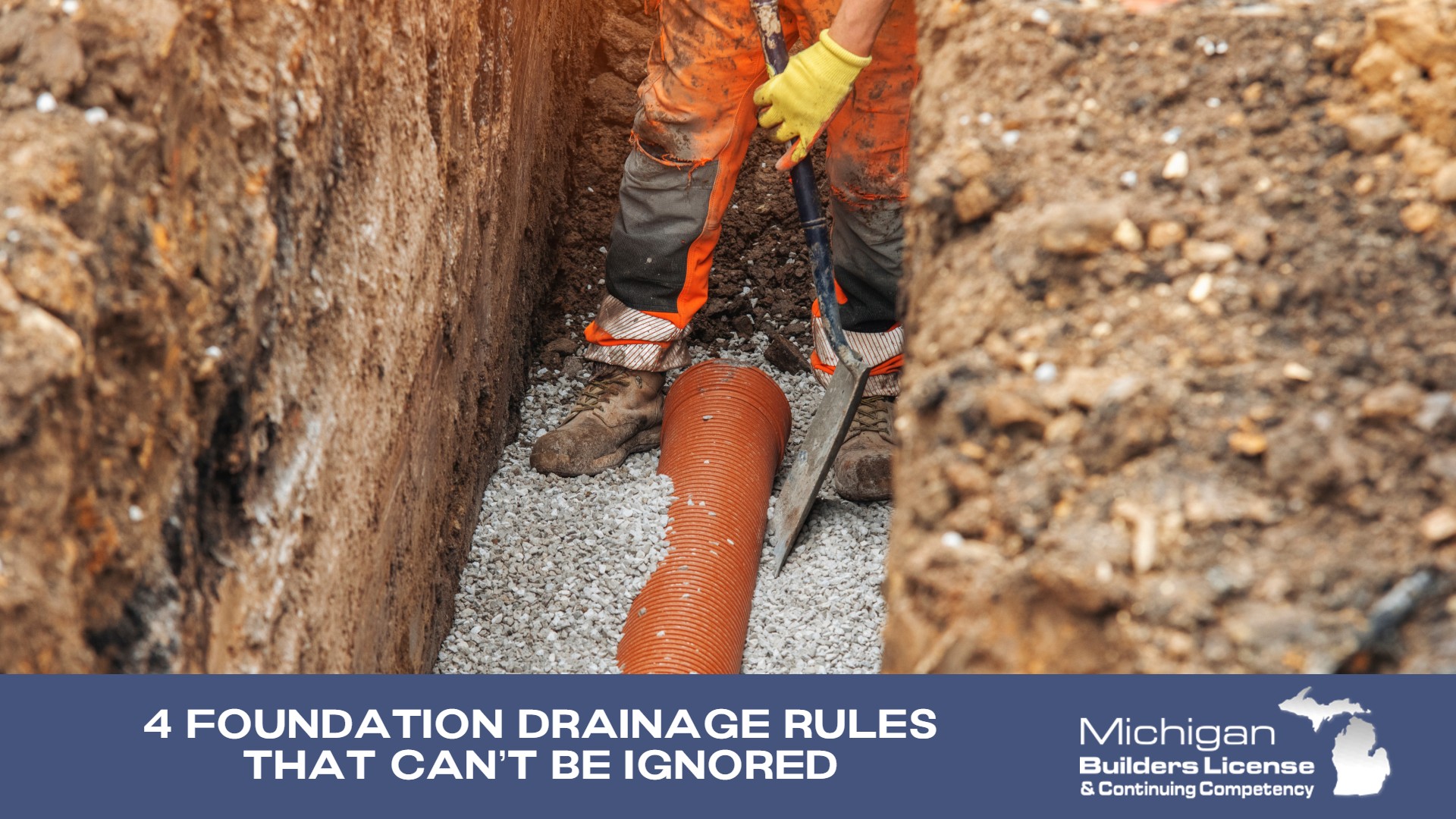If you’re a Michigan builder renewing your license in 2026, you’ll need to stay current with the latest code updates that protect your projects and reduce liability. One area you can’t afford to overlook. Foundation drainage.
This is one of the critical updates covered in the first three hours of the Michigan Builders License Continuing Competency Courses, taught by industry veteran Sid Woryn. The course not only reviews drainage requirements but also covers MIOSHA, business, and law updates, all designed to help you stay compliant and reduce liability on the job site.
The 2026 course is available now. You can purchase it today and be ready well before renewal deadlines.
Here are the 4 foundation drainage rules that can’t be ignored:
1. Perimeter Drains Are Mandatory for Habitable Spaces
Michigan building code R405.1 requires that basements and any habitable spaces below grade must have a perimeter drain system. These systems — whether drainage tile, perforated pipe, or crushed stone drains — must sit at or below the protected area and discharge either by gravity or mechanical means, such as a sump pump, into an improved drainage system.
This isn’t just a formality. Proper perimeter drainage prevents groundwater intrusion, mold, and costly structural repairs.
2. Gravel & Filter Membranes Are Key to Long-Term Performance
The code requires gravel to:
- Extend at least 1 foot beyond the footing
- Rise 6 inches above the footing
- Provide a 12-inch gravel cap around the drain pipe (2" below, 4" on sides, 6" above)
Additionally, the drain tile or pipe must be surrounded with an approved filter membrane to prevent silting and clogging. While that’s the minimum requirement, many seasoned builders add 2–3 feet of stone or sand for superior drainage and durability.
3. Footing Penetrations Must Be Reinforced
Where perimeter drains (commonly called bleeders) pass through a footing:
- The sleeve must be two sizes larger than the pipe
- The footing must be thickened to at least 12 inches, extending a foot on each side of the pipe
- Three inches of concrete cover must surround the reinforcement above and below
This reinforcement prevents the footing from cracking or weakening at penetration points. Builders who cut corners here risk failed inspections — and liability down the line.
4. Cleanouts Are a Builder’s Best Friend
While not explicitly required by code, adding cleanouts at bleeder locations is one of the smartest practices a builder can follow. Over time, drain pipes can silt up and lose capacity. A cleanout allows for quick inspection and maintenance, ensuring drainage performance for years.
Adding cleanouts shows foresight, helps protect your reputation, and reduces the risk of costly callbacks.
Why This Matters for Your License Renewal
Foundation drainage is just one of many updates Sid Woryn covers in the first three hours of the Michigan Builders License Continuing Competency Courses. With real-world insights and a focus on reducing liability, Sid ensures you understand not only the letter of the code but also the practical applications that keep your projects strong.
Builders renewing their license in 2026 can purchase the course today and be prepared ahead of schedule.
Enroll in the Michigan Builders Continuing Competency Course Today
Sources





